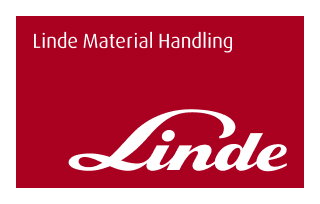Forklift controls are the key interface between the operator and the machine; understanding how to use them correctly is essential for both safety and productivity. Whether you’re a new operator or an experienced professional, mastering forklift controls ensures smooth handling, reduces downtime, and helps prevent workplace accidents.
Proper control operation also supports overall efficiency, allowing operators to move loads precisely and safely in fast-paced environments. With the right training and knowledge, every movement from lifting to steering becomes second nature.
What Are the Main Forklift Controls You Need to Know?
Every forklift is designed with intuitive controls that help operators handle loads efficiently while maintaining stability and safety. Here’s an overview of the key controls found on most forklifts:
1. Steering Wheel, Accelerator, and Brake
-
Steering wheel: Controls the direction of the rear wheels. Forklifts use rear-wheel steering for tighter turns in narrow aisles.
-
Accelerator: Regulates speed. Smooth acceleration helps maintain control and reduces load shifting.
-
Brake pedal: Slows or stops the forklift. Operators should brake gradually to prevent sudden load movement.
2. Lift, Tilt, and Side-Shift Controls
-
Lift control: Raises or lowers the forks. Operators should lift loads smoothly to avoid tipping.
-
Tilt control: Adjusts the mast angle. Tilting backward stabilises loads during transport.
-
Side-shift control: Moves the forks left or right for precise placement without repositioning the forklift.
3. Horn, Lights, and Other Safety Features
-
Horn: Alerts nearby workers in high-traffic areas or blind spots.
-
Lights: Improve visibility in low-light or indoor environments.
-
Additional safety systems: Many modern forklifts include seatbelt interlocks, stability control, and audible alarms for enhanced protection.
How Do You Operate a Forklift Safely?
Operating a forklift safely requires awareness, preparation, and consistency. Here are some essential steps for maintaining forklift safety and learning how to operate a forklift the right way:
Pre-Operation Safety Checks
-
Inspect tyres, brakes, and fluid levels before use.
-
Ensure lights, horn, and warning systems function correctly.
-
Check for visible damage or leaks.
Correct Posture and Positioning
-
Sit comfortably with both feet flat and hands on the controls.
-
Adjust the seat and steering column for a clear view of the load and surroundings.
-
Always wear a seatbelt if fitted.
Smooth Acceleration, Deceleration, and Turning
-
Accelerate gently to maintain stability.
- Avoid abrupt braking or sharp turns, especially when carrying heavy loads.
-
Maintain a steady speed and follow marked pathways.
Proper Load Handling and Stacking
-
Ensure loads are balanced and within rated capacity.
-
Keep forks low while travelling for better stability.
-
Stack loads evenly and secure them before lifting.
What Are Common Mistakes to Avoid When Using Forklift Controls?
Even skilled operators can develop unsafe habits over time. Avoiding these common mistakes is vital to maintaining a safe workplace:
-
Overloading or unevenly loading pallets: Always adhere to the forklift’s rated capacity. Overloading can cause tipping or mechanical strain.
- Sudden or sharp movements: Quick direction changes can destabilise loads and cause accidents.
-
Ignoring visibility and blind spots: Always check mirrors, use lights, and sound the horn in congested areas.
-
Incorrect control use under pressure: Rushed operation increases the risk of errors. Slow down and stay composed, even in busy conditions.
Tip: Regular practice and refresher training helps operators maintain safe habits and control accuracy.
How Can Training Improve Forklift Control Safety?
Formal training is the foundation of safe and efficient forklift operation. A well-trained operator not only minimises risks but also extends the lifespan of the equipment.
-
Accredited forklift training and certification: Courses teach safe handling, control use, and hazard awareness.
-
Hands-on practice: Real-world scenarios build confidence in using lift, tilt, and steering controls effectively.
-
Understanding manufacturer-specific features: Linde MH forklifts have advanced ergonomic designs and precision controls that operators should learn to use properly.
Trained operators contribute to better safety outcomes, reduced downtime, and improved workplace efficiency.
What Features Make Modern Forklifts Safer and Easier to Operate?
Linde Material Handling has led innovation in forklift design, integrating cutting-edge technology to make every operation safer and more comfortable.
-
Ergonomic control layouts: Linde’s dual-pedal system and fingertip hydraulic controls reduce operator fatigue and improve precision.
-
Automatic speed and stability systems: Features like Linde’s Curve Assist automatically adjust speed during turns to maintain stability.
-
Advanced safety systems: Proximity sensors, seatbelt interlocks, and telematics solutions provide real-time performance and safety insights.
-
Electric forklifts: Offer smoother, quieter operation and precise control, suitable for indoor and outdoor applications as well as sustainability-focused operations.
These innovations ensure operators remain productive while keeping safety at the forefront of every shift.
Where Can You Find Expert Forklift Solutions and Training in Australia?
Linde Material Handling Australia offers a comprehensive range of forklifts with advanced control systems and world-class safety features. Whether you’re upgrading your fleet or training your operators, Linde provides expert support to keep your operations running safely and efficiently.
Explore Linde MH’s forklift range to find the right equipment for your team.
EXPLORE LINDE SOLUTIONS

